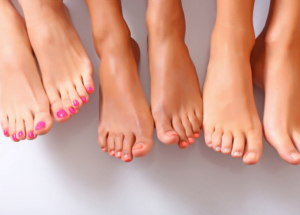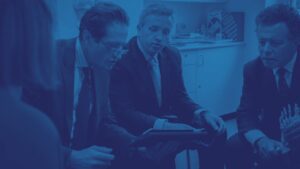Martin Klinke, from The London Foot & Ankle Centre presents a patent who successfully returned to high level running and sports activities after a flat foot operation.
In August 2017 the patient (known henceforth as A was referred to see me for a second opinion.
A was a very active person and a keen runner. In 2016, she had a stress fracture in her right hind foot from which she fully recovered after resting her foot. In January 2017 she had problems in her ankle for which she had an arthroscopy which unfortunately did not make any difference to her symptoms.
When I saw her, she presented with a slightly lowered medial longitudinal arch and a mildly increased hind foot valgus. The tibialis posterior tendon was tender to palpation but was functioning fairly well. She could still activate her muscles to bring the foot in the right position, but she had a rather tight calf muscle.
The MRI scan confirmed some inflammation around the tendon but the tendon itself looked still fairly good. We agreed that the patient should see an experienced podiatrist and continue with physiotherapy.
When I saw A two months later her symptoms had improved due to the new orthotics which gave her arch good support but she was unable to increase her activities.
What had not improved was the tightness of her calf muscle which forced the hindfoot into an unnatural position when pushing off with her foot during walking and running.
The subsequent ultrasound scan confirmed some degeneration of the tibialis posterior tendon and increasing inflammation of the surrounding tissue.
As A had explored all conservative treatment but still was not able to go running, she was keen to consider a surgical solution to her ongoing problems.
I explained to her that I would release her very tight calf muscle, shift the heel bone under the leg in order to restore the biomechanical axis of the leg and transfer a tendon to the damaged tibialis posterior tendon in order to support the muscle action that holds the foot in the anatomical position.
Intra-operatively the tendon looked as expected. There were some longitudinal splits and adhesions but the tendon was in continuity. We removed the adhesions, released the tendon and removed also the damaged part of the tibialis posterior tendon. As there was still some healthy-looking tendon which we could keep, we augmented the tendon with another tendon ( FDL = Flexor digitorum Tendon) which runs next to the tibialis posterior tendon which gave very good hold to the remaining tibialis posterior tendon.
.
At the first follow up A presented with little swelling but otherwise no problems. The muscle transfer was still rather weak but this was to be expected at this stage. We provided A with a boot so she could take her foot out of the boot and start to mobilise the foot regularly to prevent any recurrent adhesions.
Four weeks after the operation A had made further progress, the calf muscle was very flexible, the tibialis posterior tendon was getting stronger and the X rays showed a full healing of the bone (os calcis).
I showed the patient in detail how to mobilise the tib post muscle in order to improve the strength and how to continue stretching the calf muscle. As she went on holidays, I told her that she could go into the salt water as this would help the wound healing but she would need to keep the boot on at all times, also in the sea (which the boot permitted). She was allowed to increase her weight bearing to full weight bearing as tolerated but when mobilising she would need to keep the boot on at all times.
Ten weeks after the operation she was able to fully weight bear and her symptoms overall had improved further. The tibialis posterior tendon with the augmented FDL tendon was getting stronger and stronger. There was very little swelling or redness in the foot and ankle area. As she was doing so well, we agreed that she could increase her activities including more walking and cycling but also to start kayaking, rowing and swimming. She was told to refrain from any impact exercise such as running or jumping.
After three months A started some gentle jogging which caused mild discomfort but swimming, kayaking and spinning did not cause her any issues. On clinical examination she had an improved arch along the midfoot and good alignment of the hindfoot with only very mild tenderness along the tendon transfer.
A was now allowed to further increase her running and impact exercises but we warned her to listen to her body and regard pain in her foot as a warning sign.
She went also back to see her podiatrist as the shape of her foot had changed and she would therefore benefit from new orthotics.
A was back to all of her high-level sports activities including running after about 6 months.
She competed in various sports events including off road trial running over 13 miles. She was also able to increase her mileage and could do over 20 miles of running as well as swimming, cycling and kayaking without any problems.
She was fitter than ever and was delighted that she had the operation done as she was able to enjoy all her sports activities at the highest level again.


